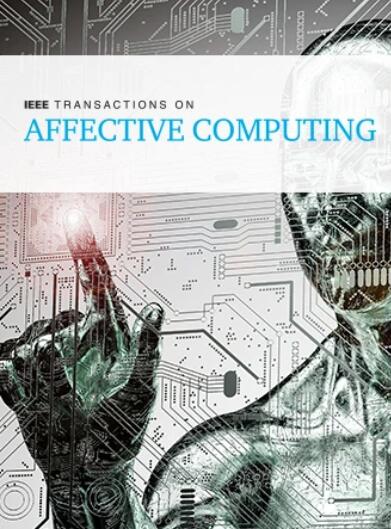GMSS: Graph-Based Multi-Task Self-Supervised Learning for EEG Emotion Recognition
IF 9.6
2区 计算机科学
Q1 COMPUTER SCIENCE, ARTIFICIAL INTELLIGENCE
引用次数: 17
Abstract
Previous electroencephalogram (EEG) emotion recognition relies on single-task learning, which may lead to overfitting and learned emotion features lacking generalization. In this paper, a graph-based multi-task self-supervised learning model (GMSS) for EEG emotion recognition is proposed. GMSS has the ability to learn more general representations by integrating multiple self-supervised tasks, including spatial and frequency jigsaw puzzle tasks, and contrastive learning tasks. By learning from multiple tasks simultaneously, GMSS can find a representation that captures all of the tasks thereby decreasing the chance of overfitting on the original task, i.e., emotion recognition task. In particular, the spatial jigsaw puzzle task aims to capture the intrinsic spatial relationships of different brain regions. Considering the importance of frequency information in EEG emotional signals, the goal of the frequency jigsaw puzzle task is to explore the crucial frequency bands for EEG emotion recognition. To further regularize the learned features and encourage the network to learn inherent representations, contrastive learning task is adopted in this work by mapping the transformed data into a common feature space. The performance of the proposed GMSS is compared with several popular unsupervised and supervised methods. Experiments on SEED, SEED-IV, and MPED datasets show that the proposed model has remarkable advantages in learning more discriminative and general features for EEG emotional signals.GMSS:用于脑电情绪识别的基于图的多任务自监督学习
以往的脑电图(EEG)情绪识别依赖于单任务学习,这可能导致过度拟合和学习的情绪特征缺乏泛化能力。本文提出了一种用于脑电情绪识别的基于图的多任务自监督学习模型。GMSS能够通过整合多个自我监督任务来学习更一般的表征,包括空间和频率拼图任务以及对比学习任务。通过同时从多个任务中学习,GMSS可以找到捕获所有任务的表示,从而减少对原始任务(即情绪识别任务)进行过拟合的机会。特别是,空间拼图任务旨在捕捉不同大脑区域的内在空间关系。考虑到频率信息在脑电情绪信号中的重要性,频率拼图任务的目标是探索脑电情绪识别的关键频带。为了进一步正则化所学习的特征并鼓励网络学习固有表征,本工作采用了对比学习任务,将转换后的数据映射到公共特征空间中。将所提出的GMSS的性能与几种流行的无监督和有监督方法进行了比较。在SEED、SEED-IV和MPED数据集上的实验表明,所提出的模型在学习EEG情绪信号的更多判别性和通用性特征方面具有显著优势。
本文章由计算机程序翻译,如有差异,请以英文原文为准。
求助全文
约1分钟内获得全文
求助全文
来源期刊

IEEE Transactions on Affective Computing
COMPUTER SCIENCE, ARTIFICIAL INTELLIGENCE-COMPUTER SCIENCE, CYBERNETICS
CiteScore
15.00
自引率
6.20%
发文量
174
期刊介绍:
The IEEE Transactions on Affective Computing is an international and interdisciplinary journal. Its primary goal is to share research findings on the development of systems capable of recognizing, interpreting, and simulating human emotions and related affective phenomena. The journal publishes original research on the underlying principles and theories that explain how and why affective factors shape human-technology interactions. It also focuses on how techniques for sensing and simulating affect can enhance our understanding of human emotions and processes. Additionally, the journal explores the design, implementation, and evaluation of systems that prioritize the consideration of affect in their usability. We also welcome surveys of existing work that provide new perspectives on the historical and future directions of this field.
 求助内容:
求助内容: 应助结果提醒方式:
应助结果提醒方式:


